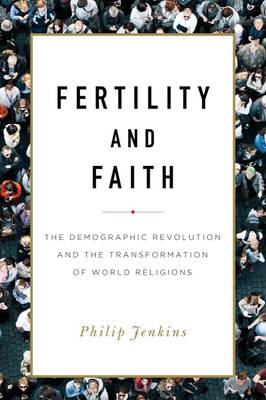
- Afhalen na 1 uur in een winkel met voorraad
- Gratis thuislevering in België vanaf € 30
- Ruim aanbod met 7 miljoen producten
- Afhalen na 1 uur in een winkel met voorraad
- Gratis thuislevering in België vanaf € 30
- Ruim aanbod met 7 miljoen producten
Fertility and Faith
The Demographic Revolution and the Transformation of World Religions
Philip JenkinsOmschrijving
Demography drives religious change. High-fertility societies, like most of contemporary Africa, tend to be fervent and devout. The lower a population's fertility rates, the greater the tendency for people to detach from organized or institutional religion. Thus, fertility rates supply an effective gauge of secularization trends. In Fertility and Faith, Philip Jenkins maps the demographic revolution that has taken hold of many countries around the globe in recent decades and explores the implications for the future development of the world's religions.
Demographic change has driven the secularization of contemporary Western Europe, where the revolution began. Jenkins shows how the European trajectory of rapid declines in fertility is now affecting much of the globe. The implications are clear: the religious character of many non-European areas is highly likely to move in the direction of sweeping secularization. And this is now reshaping the United States itself.
This demographic revolution is reshaping Christianity, Buddhism, Islam, Hinduism, and Judaism. In order to accommodate the new social trends, these religions must adapt to situations where large families are no longer the norm. Each religious tradition will develop distinctive emphases concerning morality, gender, and sexuality, as well as the roles of clergy and laity in the faith's institutional structures.
Radical change follows great upheaval. The tidal shift is well underway. With Fertility and Faith, Philip Jenkins describes this ongoing phenomenon and envisions our collective religious future.
Specificaties
Betrokkenen
- Auteur(s):
- Uitgeverij:
Inhoud
- Aantal bladzijden:
- 270
- Taal:
- Engels
Eigenschappen
- Productcode (EAN):
- 9781481311311
- Verschijningsdatum:
- 1/07/2020
- Uitvoering:
- Hardcover
- Formaat:
- Genaaid
- Afmetingen:
- 160 mm x 229 mm
- Gewicht:
- 612 g

Alleen bij Standaard Boekhandel
Beoordelingen
We publiceren alleen reviews die voldoen aan de voorwaarden voor reviews. Bekijk onze voorwaarden voor reviews.











